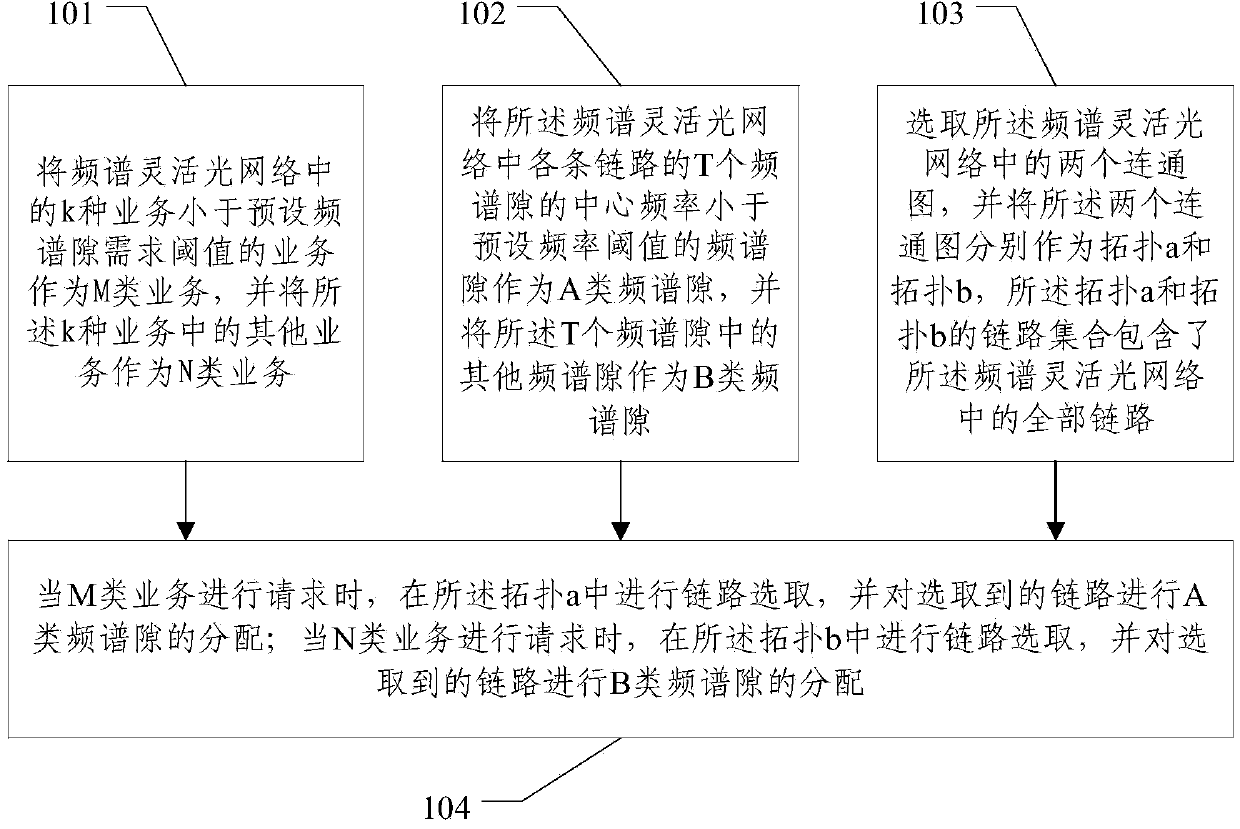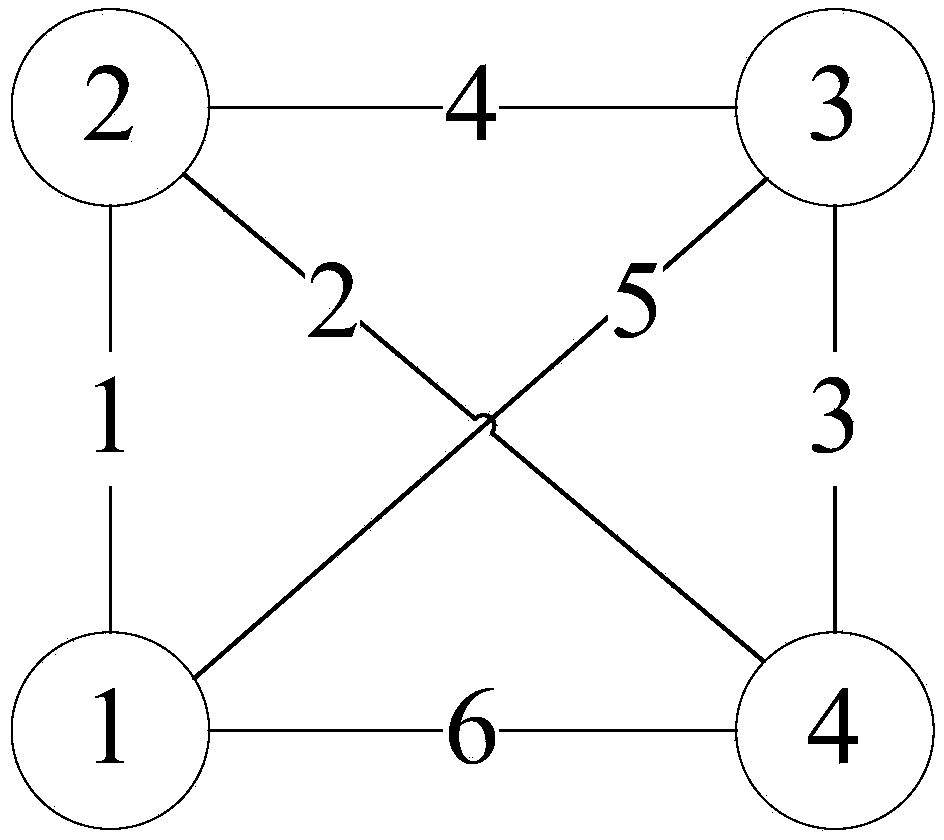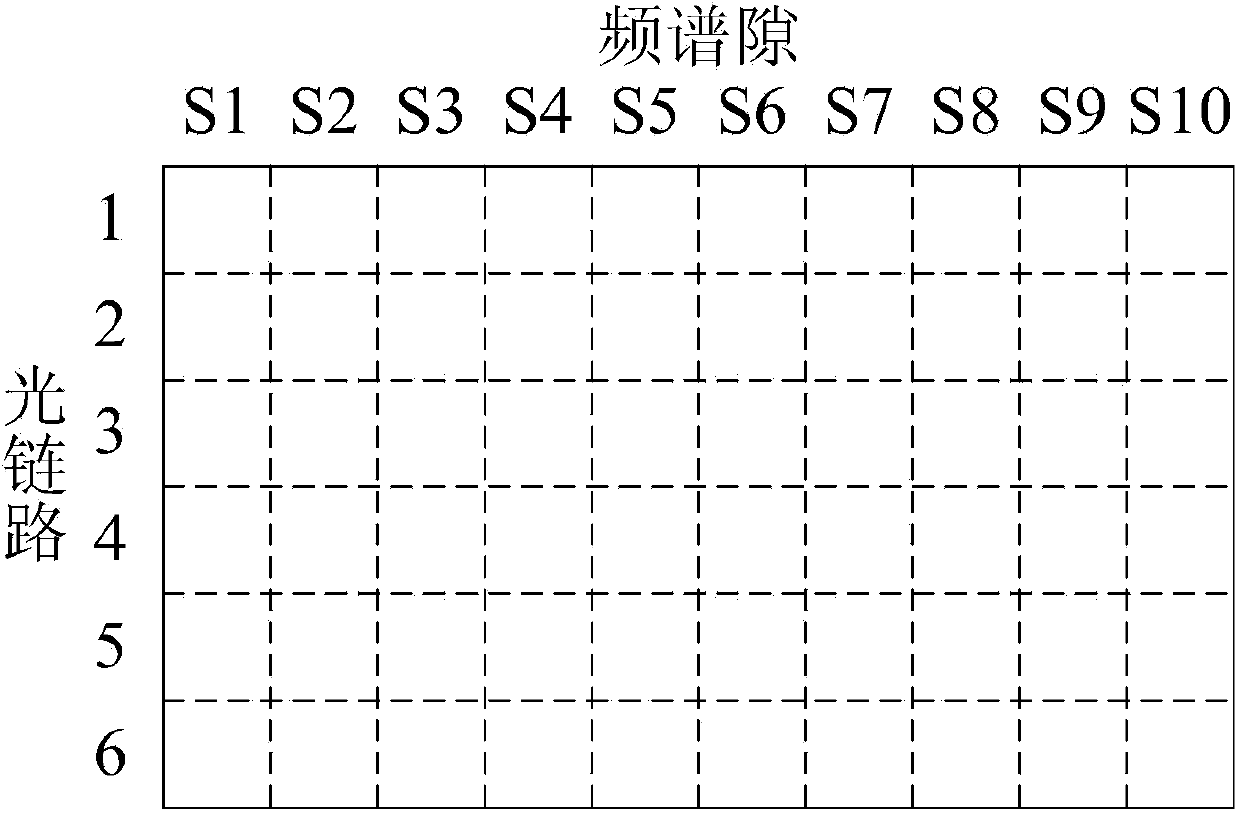Method and device for spectrum allocation in spectral flexible optical network
A spectrum allocation and optical network technology, applied in the field of spectrum flexible optical network, can solve problems such as blocked connection requests and inability to allocate large enough spectrum blocks, and achieve the effect of reducing blocking rate and spectrum fragmentation
- Summary
- Abstract
- Description
- Claims
- Application Information
AI Technical Summary
Problems solved by technology
Method used
Image
Examples
Embodiment
[0054] The present invention is described below with a specific embodiment, but the protection scope of the present invention is not limited. In this embodiment, spectrum allocation is realized through a two-dimensional spectrum space. The spectrum flexible optical network is set as shown in FIG.
[0055] The two-dimensional spectrum space refers to the two-dimensional spectrum resource space formed by the link space (the first dimension) and the spectrum slot space (the second dimension) in the spectrum flexible optical network. Because the spectrum slot width and spectrum range of any link are the same, if the spectrum resource of the whole network is represented by the spectrum slot as a unit, it can be expressed as a two-dimensional spectrum space, as shown in Figure 2(b). Assuming that there are four kinds of services in the spectrum flexible optical network, they are 10Gb / s, 40Gb / s, 100Gb / s and 400Gb / s respectively, and the required spectrum bandwidths correspond to 25GH...
PUM
 Login to View More
Login to View More Abstract
Description
Claims
Application Information
 Login to View More
Login to View More - R&D
- Intellectual Property
- Life Sciences
- Materials
- Tech Scout
- Unparalleled Data Quality
- Higher Quality Content
- 60% Fewer Hallucinations
Browse by: Latest US Patents, China's latest patents, Technical Efficacy Thesaurus, Application Domain, Technology Topic, Popular Technical Reports.
© 2025 PatSnap. All rights reserved.Legal|Privacy policy|Modern Slavery Act Transparency Statement|Sitemap|About US| Contact US: help@patsnap.com



